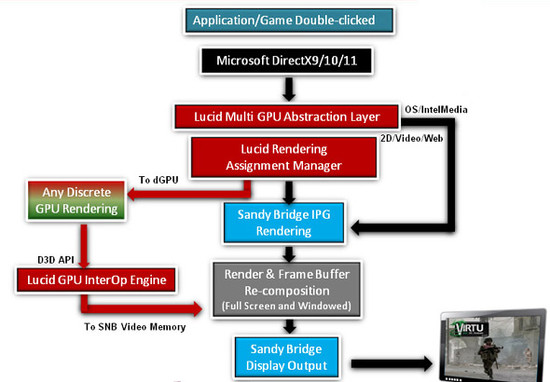LucidLogix is with its Virtu technology the first to offer a software solution for switching between integrated and external GPUs for desktops. The licensing fee is said to be too high to be an attractive alternative for motherboard makers and now AMD and Nvidia are planning to counter Lucid Virtu.
Lucid Virtu is a software technology that currently works with Sandy Bridge and targets motherboards with H67. Virtu simply puts the discrete graphics card in idle when not needed and switches all action to the inegrated GPU in Sandy Bridge, which leads to lower power consumption and less heat.
The drawback is the license fee that is too high for motherboard makers fighting with extremely narrow margins. According to Semiaccurate he price is $10 in small volumes and $5 in large volumes. This may not sound like much to the end user, but for the manufacturers they have to justify every little thing and make sure they get their money back in the end.

Both AMD and Nvidia are said to be working on their own solutions to compete with LucidLogix. The advantage will be lower costs for the manufacturer, but most of all the consumer and that everything is integrated into the control panel that is already there. Another advantage is that a soution from AMD and Nvidia should also work on AMD systems.
If LucidLogix is going to be around for longer and really wants to spread its software it needs to lower its prices and offer something AMD and Nvidia can’t. In the future LucidLogix is planning not only to put the card to rest, but simply shut it off, about the same as when the computer goes into power saving mode, but just the graphics card.















